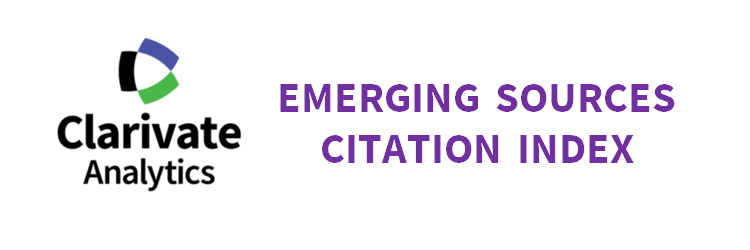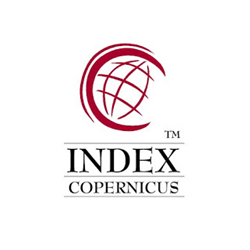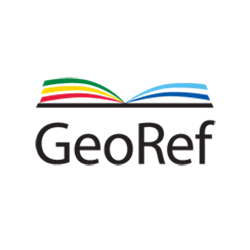Stratigraphic and petrographic study of the limestones of the La Tomita sector, in the municipality of Manaure-Cesar, Colombia
DOI:
https://doi.org/10.17981/ingecuc.18.1.2022.11Keywords:
Limestone, Stratigraphy, Manaure, Petrography, ShalesAbstract
Introduction: In the La Tomita sector, municipality of Manaure (Cesar), outcrop a stratigraphic sequence of biomicrite limestones, biopelmicrites, pelmicrites, wackestones and packstones intercalated with shales, corresponding to the Lagunita Formation of the Cogollo Group.
Objective: To know the stratigraphic aspects, mineralogical composition and paleoenvironmental conditions of the outcropping limestones.
Methodology: It proceeded with a lithostratigraphic description in the massif and taking samples in situ, twelve samples were extracted, of which seven were taken for petrographic analysis.
Results: Wackestone facies with pelagic microfossils, bioclastic packstone, wackestone with worn mollusc bioclasts and wackestone with peloids were recognized. Petrographically, the limestones in this sector are made up of zircon, glauconite, sparite, micrite, pellets, planktonic foraminifera of the genus Heterohelix, of the Moremani species, and foraminifera of the genus Hedbergella and Trocoidea species. Bivalve fossils and some algae were also observed.
Conclusions: These facies allowed establishing that these limestones were formed in an environment of medium platform with some external platform intervals, covering an area of facies of open sea.
Downloads
References
G. D. L. R. Díaz, Z. M. Mejía, E. M. Nieves, E. R. Martinez, D. M. Jaraba, and F. L. Navarro, “Geoquímica de las calizas del sector La Tomita, municipio de Manaure-Cesar. Aporte a la determinación de su uso como material industria,” Prospectiva, vol. 18, no. 2, 2020.
D. M. Jaraba, C. R. Julio, and E. R. Martínez, “Descripción de los impactos ambientales causados por el inadecuado manejo en la caverna sabana de león y cueva coco loco, municipio de manaure, serranía de perijá, departamento del Cesar- Colombia,” Ingeniare, vol. 0, no. 23 SE-Artículos, pp. 25–34, Sep. 2017.
F. H. Colmenares et al., “Geología De La Planchas 11, 12, 13, 14, 18, 19, 20, 21, 25, 26, 27, 33 Y 34,” Bogotá D.C., Colombia, 2007.
L. Haught, B. Colley, and H. Belding, “Geology of the Cesar-Rancheria Valley and commissary of Guajira,” Geol. Report, 449, 1945.
R. C. A. Calvo, “Análisis tectonoestratigráfico y de procedencia en la Subcuenca de Cesar: relación con los sistemas petroleros,” Universidad Simón Bolívar, 2009.
H. G. Iregui, R. S. Echeverri, J. I. Cárdenas, C. M. Muñoz, and W. V. Giraldo, “Elaboración de la cartografía geológica de un conjunto de planchas a escala 1:100.000 ubicadas en cuatro bloques del territorio nacional, identificados por el Servicio Geológico Colombiano,” Bogotá D.C., Colombia, 2015.
GEOESTUDIOS LTDA, “Cartografía geológica y muestreo en tres áreas de Colombia: Santander, Tolima y Cesar,” Bogotá D.C., Colombia, Contrato HC-101 2014, 2014.
F. Etayo Serna, “Metodologia de trabajo del proyecto cretacico,” Publicaciones geológicas Espec. del INGEOMINAS, vol. 16, pp. 1–13, 1985.
R. J. Dunham, “Clasificación de las rocas de carbonatos de acuerdo con la textura de deposición. en: jamón,” Asociación americana de geólogos de petróleo, 1996.
R. L. Folk, “Clasificación de las rocas de carbonatos de acuerdo a las proporciones relativas de los tres constituyentes básicos: granos (aloquimicos), matriz micrítica y cemento, esparítico (ortoquímicos),” 1962.
R. L. Folk, “Practical petrographic classification of limestones,” vol. 43, pp. 1–38, 1959.
A. Taboada et al., “Geodynamics of the northern Andes: Subductions and intracontinental deformation (Colombia),” Tectonics, vol. 19, no. 5, pp. 787–813, Oct. 2000.
D. C. M. Jaraba, E. E. R. Martinez, and B. A. Gomez, “Petrographic study of the limestone deposit in the municipality of la Paz, department of Cesar,” Prospectiva, vol. 12, no. 2, pp. 82–89, 2014.
F. Buchely et al., Cartografía geológica y muestreo geoquímico de la parte norte de la Serranía de Perijá Planchas 21, 22, 27, 28, 34 y 35. Bogotá D.C., 2010.
D. E. Peruá, O. R. Díaz, and J. L. Fernández-alonso, “Análisis corológico de la flora endémica de la Serranía de Perijá, Colombia,” An. del Jardín Botánico Madrid, vol. 60, no. 2, pp. 347–369, 2002.
J. B. Miller, “Directrices tectónicas en la Sierra de Perijá y partes adyacentes de Venezuela y Colombia,” Bol. Geol. Minist. Min. Hidroc., publ. esp, no. 3, pp. 685–718, 1960.
E. Castro, “Aspectos geológicos y principales con-sideraciones de la evaluación ambiental estratégica (diagnóstico ambiental) del distrito minero La Jagua, departamento del Cesar,” Bucaramanga, 2009.
M. G. González et al., “Prospectividad de la Cuenca Cesar Ranchería,” 2008.
M. Hernández, “Geología de las planchas 11 Santa Marta y 18 Ciénaga,” 1996.
M. D. Lozada Molina et al., “Contribución al conocimiento geológico de la Serranía del Perijá mediante cartografía a escala 1:25.000 del Grupo Cogollo, en el sector oriental del municipio de Becerril, Cesar,” Boletín Geológico, no. 45, pp. 49–59, 2019.
H. Cáceres, R. Camacho, and J. Reyes, “The Geology of the Rancheria Basin. Colombian Society of Petroleum Geologists and Geophysicists. Geological Field – Trips Colombia, 1980 – 1989,” 1980.
A. H. Garner, “General Oil Geology of Colombia,” Bul. Ame. Assoc. Petr. Geol, vol. 11, pp. 151–156, 1927.
M. García-González, L. E. Cruz-Guevara, and R. Mier-Umaña, “Evolución térmica de la Subcuenca de la Baja Guajira,” Boletín Geol., vol. 32, no. 2, pp. 55–71, 2010.
R.-C. C. Committee. and G. S. of America., Rock-color chart : with genuine Munsell color chips. Grand Rapids, MI: Geological Society of America, 2009.
J. L. Wilson, Carbonate Facies in Geologic History, 1st ed. Springer, New York, NY, 1975.
E. Flügel, Microfacies of Carbonate Rocks, 1st ed. Springer-Verlag Berlin Heidelberg, 2004.
R. L. Folk, Petrologie of sedimentary rocks. 1974.
D. A. Kietzmann, R. M. Palma, and G. S. Bressan, “Facies y microfacies de la rampa tithoniana-berriasiana de la Cuenca Neuquina (Formación Vaca Muerta) en la sección del arroyo Loncoche - Malargüe, provincia de Mendoza,” Rev. la Asoc. Geológica Argentina, vol. 63, no. 4, pp. 696–713, 2008.
M. H. Chaustre, “Geología de Plancha 48 - La Jagua de Ibirico, escala 1:100.000.,” Bucaramanga, 2000.
H. H. Camacho and M. I. Longobucco, Los invertebrados fósiles, 1a ed., vol. I. Buenos Aires (Argentina), 2007.
J. Schieber, “Microbial mats in terrigenous clastics; the challenge of identification in the rock record,” Palaios, vol. 14, no. 1, pp. 3–12, Feb. 1999.
L. Pichevin, P. Bertrand, M. Boussafir, and J.-R. Disnar, “Organic matter accumulation and preservation controls in a deep sea modern environment: an example from Namibian slope sediments,” Org. Geochem., vol. 35, no. 5, pp. 543–559, 2004.
A. Blanco Piñón, “Evidencias petrográficas de estructuras de origen algal/bacteriano en carbonatos de la Formación Agua Nueva (Cenomaniano/Turoniano: Cretácico Superior) en Xilitla, S.L.P. México central,” Boletín la Soc. Geológica Mex., vol. 66, no. 2, pp. 397–412, 2014.

Downloads
Published
How to Cite
Issue
Section
License
Copyright (c) 2021 INGE CUC

This work is licensed under a Creative Commons Attribution-NonCommercial-NoDerivatives 4.0 International License.
Published papers are the exclusive responsibility of their authors and do not necessary reflect the opinions of the editorial committee.
INGE CUC Journal respects the moral rights of its authors, whom must cede the editorial committee the patrimonial rights of the published material. In turn, the authors inform that the current work is unpublished and has not been previously published.
All articles are licensed under a Creative Commons Attribution-NonCommercial-NoDerivatives 4.0 International License.


 English
English
 Español (España)
Español (España)






















